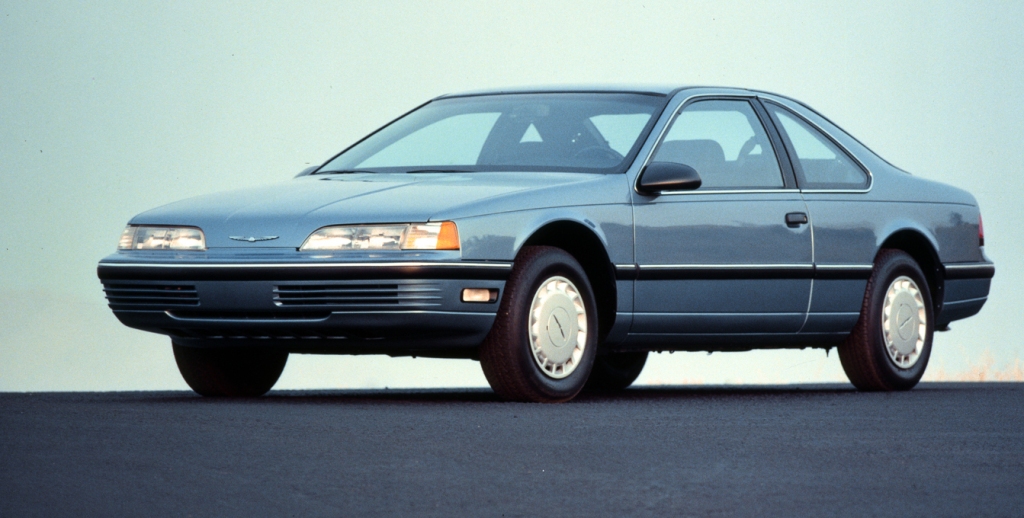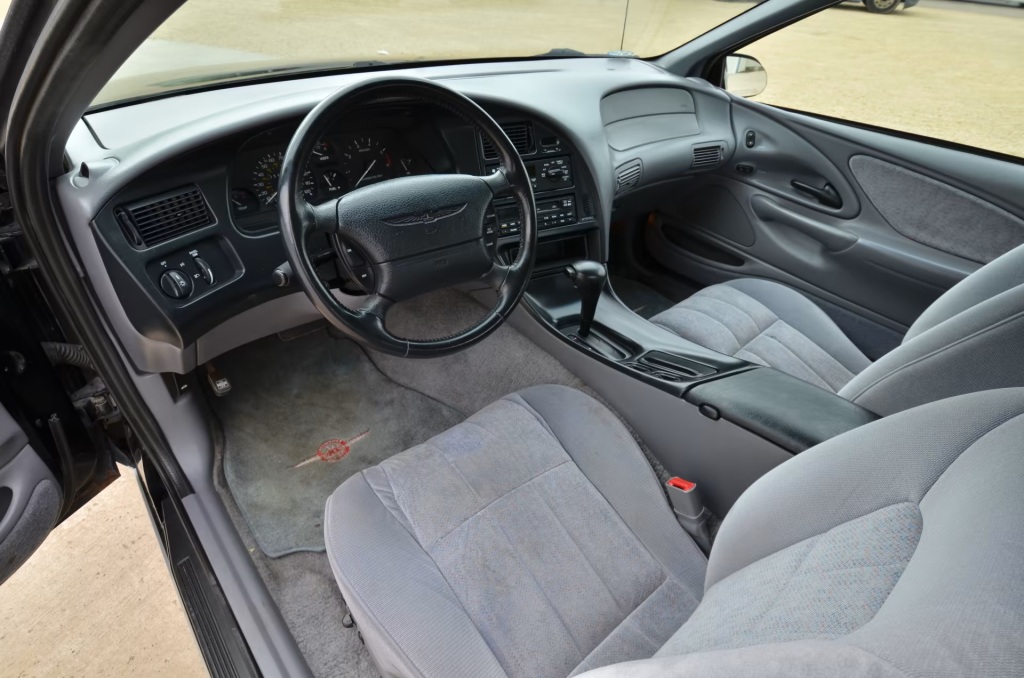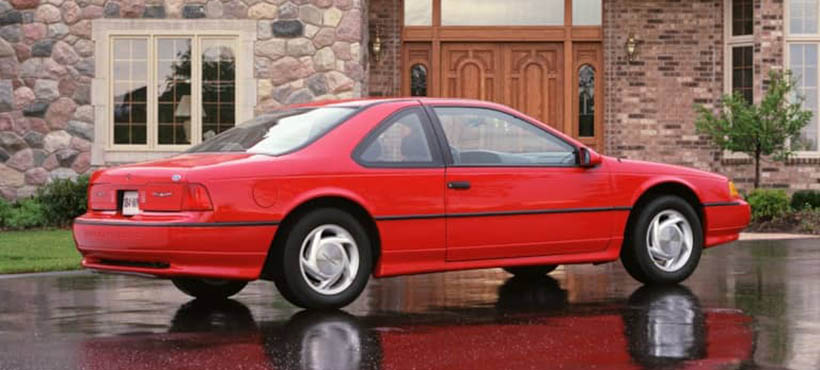1989 to 1997 Ford Thunderbird: Truth in Advertising

For much of my teenage and young adult life, premium American cars have touted their European inspired performance. This often meant a more controlled ride or responsive steering in addition to black out trim. For the most part, it amounted to nothing more than advertising propaganda. There were a handful of cars that actually delivered on that promise. Ford’s Thunderbird was one of them – on occasion. From 1982 forward, the Thunderbird and it’s Mercury twin the Cougar have gotten closer to the advertised European inspired tagline. The Thunderbird might have reached its peak as a performance car with the 11th generation which debut in 1989 as an all new approach to that ever elusive tagline.

The new Thunderbird was longer, lower and wider than the outgoing model. In the past the Thunderbird saw itself as a competitor to BMW’s 6 Series (this always made me grin). This time it actually looked like an updated version of the 6 Series and could finally be considered a serious alternative to the German GT coupe. Despite all of its European inspiration, the Thunderbird stayed close to the American tradition of the big touring coupe. It featured a simplified nose with aero elements and vents that highlighted it’s grilless facia design. The greenhouse was trapezoidal in shape with thin ‘C’ pillars that improved outward visibility. Even the base Thunderbird looked sleek and exciting, but it was the new supercharged SuperCoupe that stirred the most excitement.

The initial line up consisted of three models, a base, LX and SC. Base and LX cars came with a 3.8-liter 140 hp V6. Needless to say in a car well over 3,500 lbs. the normally aspirated engine offered less than sprightly performance. The optional engine, a supercharged intercooled version of the 3.8 with 210 hp was reserved for the SC. There was even a Mazda developed 5-speed manual transmission offered, but the 3-speed automatic was by far the most common choice among buyers.
Other technical highlights included a limited slip differential in the Super Coupe as well as disc brakes all around (on all models) with standard anti-locks on the SC. Swirly style 16′ aluminum wheels distinguished the SC from the 15′ alloys and wheel covers on base and LX cars. All Thunderbirds used a fully independent suspension with the SC having the added benefit of an adjustable shock system controlled from the center console.

Immediately the SC wooed the press and public alike with pre-orders lined up as early as the summer before launch (it was featured in many magazines through the summer of 1988). The Thunderbird was Car and Drivers Car of the Year in 1989 and would continue to rack up accolades for years up to its demise in 1996 . The early ‘90s was a good time for Ford as it owned Volvo and Jaguar while having a big stake in Mazda. It was the best of all worlds as Mazda engineering and reliability coupled with European-styled suspension tuning must have had some influence on the Thunderbird’s chassis development because it was one of the best handling American cars of it’s time. The Thunderbird SC was often compaired to the Regals and Monte Carlos of the day even though they represented a newer breed of slightly downsized personal luxury coupes. The RWD SuperCoupe was closer in mission scope to the contemporary GM E-body cars despite them being front wheel drive.

The European influence extended to the interior with it’s wraparound floor length console and clearly labeled knobs and gauges. The big seats in the base and LX were wide and ideally suited for larger Americans. The SC’s seats were bolstered and (comparatively) snug fitting for more sporting driving. The changes to the interior were minor, with a revamp occurring for the 94 model year forward. By that time leather seats would be offered in the LX in addition to the standard cloth seats. For a coupe, the Thunderbird had generous space for its rear seat passengers despite the mandatory drivetrain hump for its rear wheel. All Thunderbirds featured the added versatility of fold down rear seats, something not commonly offered in many large coupes or the era.
Ford offered a V8 option as early as 1991. A version of the Mustang’s 5.0 High Output V8 (4.8) provided a potentially exciting alternative to the SC’s V6. When fitted with Ford’s Sport Package (similar to the SC’s standard suspension enhancements), a V8 powered LX was a legitimately good performance car. The 5.0’s 210 hp was a bit less than the Mustang’s application, but when fitted to the LX (or base trim) Motor Trend recorded a 7 second 0 to 60 time, which was impressive for so large a car. The SuperCoupe’s 6.8 time and top speed of 145mph still represented the top end of Thunderbird performance.

The LX was by far the biggest seller of all T-Bird trims. The base T-Bird with its V6 or V8 was dropped after the ’92 model year. A Sport model arrived a year before a major refresh in 1995. 1995 was also the year of the special 40th Anniversary edition. Based on the LX, just under 300 were sold. The 40th Anniversary car stands out due to its special badging and occasional ground effects (which would show up on some other LX cars as owner or dealer installed add ons). The most stand out feature was the two toned color schemes. The photo shows a Midnight blue and grey example, although there are other color combinations. All these cars came standard with the V8. Sport models would start looking like the SC, but without the SC embossed on the front and with different wheels. Around this time many LX owners were adding ground effects or buying them installed from dealers (for a look similar to the 40th Anniversary car).

SC models remained the most powerful now at 230 hp. For the ’96 and ’97 model years, the model mix was trimmed down to just the LX with either V6 or V8 engines. The final 11th gen Thunderbirds were softer in overall appearance with no ground effects or aggressive diffusers anchoring the bottom as they did with the SuperCoupe or Sport models. As large coupes fell out of favor the Thunderbird would follow suite. It would be the end of an era – until an all new retro Thunderbird arrived in 2001. That car was a different animal altogether focusing more on style and luxury to the point of becoming an expensive boutique car.

